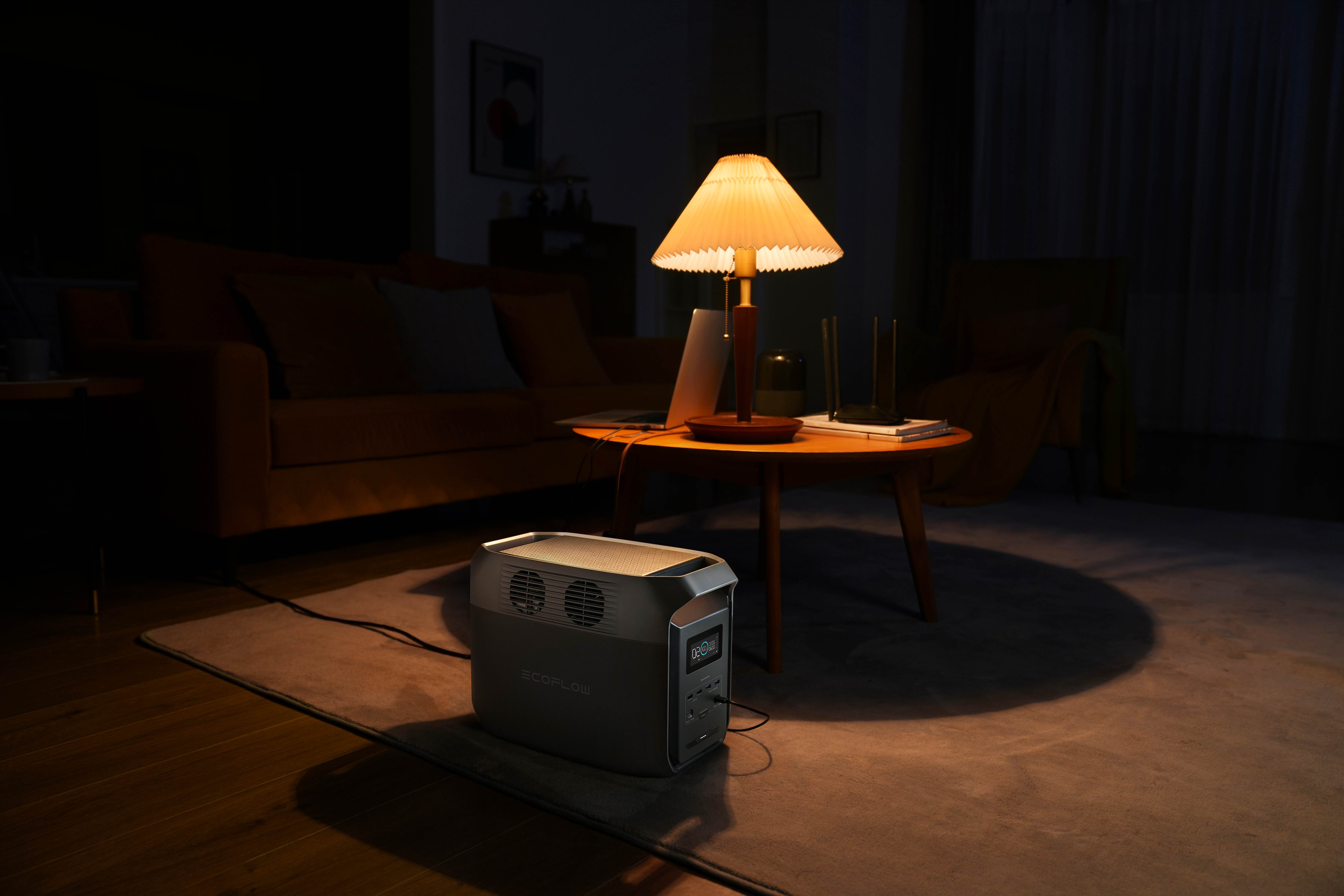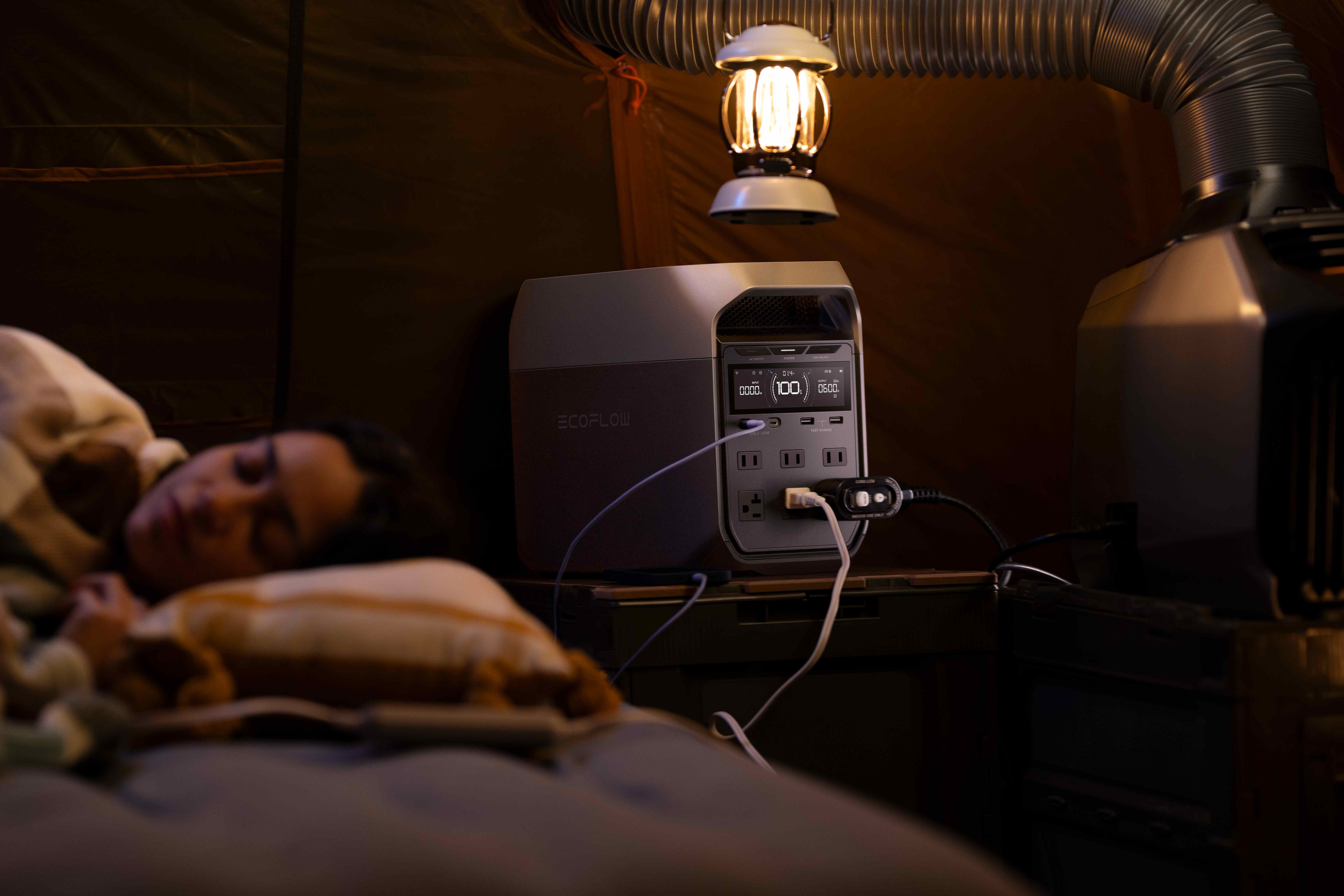- What Exactly is a Power Surge?
- What Causes a Power Surge?
- What Damage Can a Surge Actually Do?
- How Can You Tell if a Surge Has Occurred?
- What is the Best Way to Protect Your Home?
- Can Portable Power Stations Help With Surge Protection?
- If Damage Occurs, Who is Responsible for the Cost?
- What Should You Do Next to Protect Your Home?
On Power Surge: Causes, Effects, and Protection
- What Exactly is a Power Surge?
- What Causes a Power Surge?
- What Damage Can a Surge Actually Do?
- How Can You Tell if a Surge Has Occurred?
- What is the Best Way to Protect Your Home?
- Can Portable Power Stations Help With Surge Protection?
- If Damage Occurs, Who is Responsible for the Cost?
- What Should You Do Next to Protect Your Home?
Are your electronics truly safe? Most people don't think about the electricity dangers that are hidden in their walls until it's too late. The power surge is that danger. A flickering light or a short power loss may not seem dangerous, but sudden, violent voltage spikes, also known as a power surge, can damage or destroy your expensive electronics right away, from your smart TV to your important home server.
What Exactly is a Power Surge?
Simply put, a power surge is a sudden, sharp, but very brief increase in voltage that significantly exceeds the normal flow of electricity. In the United States, standard household voltage is about 120 volts. A surge, though, can spike this to hundreds or even thousands of volts in milliseconds. This rapid and intense overvoltage overpowers the components inside your electronic devices.
Your home wiring has a steady flow. A power surge is like a sudden flood—it destroys anything delicate in its path. Since modern electronics rely on miniature circuits designed for consistent voltage, that excess energy converts into damaging heat, often resulting in burned circuits and fried components.
What Causes a Power Surge?
To stop a power surge, you first need to know what starts it. Surges don't only happen during bad storms; they're an everyday issue. They come from two main places: outside your home (external) and inside your home (internal).
Outside Causes (The Big Jumps)
These outside events cause the largest and most dangerous surges:
Lightning Strikes: This is the biggest cause. Even if lightning hits a mile away (near a power line or transformer), it can send a huge wave of electricity into your house wires.
Utility Work: When the electric company turns the power grid off and back on (like after an outage), the change in power flow can cause smaller, damaging surges.
Inside Causes (The Constant Wear)
Most power surges actually start right inside your home. They aren't as powerful as lightning, but they happen very often and damage your devices slowly over time:
Appliances Turning On/Off: Machines that use big motors, like your A/C or refrigerator, pull a lot of power when they cycle. This sudden change in power demand briefly spikes the voltage in your home's circuits.
Old or Bad Wiring: If your house has old or poor wiring, it can create weak connections. These weak spots cause small electrical sparks and sudden, unstable voltage.


What Damage Can a Surge Actually Do?
Since power surges happen constantly both inside and outside your home, you need to grasp the true cost of leaving your devices unprotected. The harm a power surge inflicts ranges from immediate catastrophic failure to a slow, quiet decline in device performance.
Immediate, Catastrophic Damage
The largest surges, particularly from lightning or grid failures, cause instant, obvious failure:
It causes component failure. The excess voltage fires the circuit panels, processors, and power supplies of your devices. The motherboard of your computer or the main board of your refrigerator can be instantly ruined.
It causes burn marks and fire risk. In severe cases, the heat generated by the surge melts plastic or creates obvious burn marks on outlets and appliance casings, posing a fire risk.
And it causes data loss. For computers, servers, and Network Attached Storage (NAS) systems, a sudden surge corrupts data, leading to irreversible loss of critical files.
Long-Term, Cumulative Damage
The common, small internal surges are often missed, but they constantly threaten your electronics’ lifespan:
One is chronic degradation. Each small surge stresses the delicate components, causing tiny amounts of heat damage. Over months or years, this cumulative effect weakens the device’s reliability, causing it to fail much earlier than expected.
And also, it reduces performance. Before failure, you might notice equipment running slower, rebooting randomly, or showing erratic behavior—often a sign of a weakened power supply or overloaded components.
How Can You Tell if a Surge Has Occurred?
Whether the damage is instant or cumulative, your electrical system often provides warnings. You need to know what signs to look for. Your electronics may suffer damage even if they seem to work fine. Recognize these three clear signs that electricity has misbehaved in your home:
Scorched Outlets: Check your wall outlets and power strips closely. Black or brown burn marks around the openings confirm a surge created enough heat to damage the plastic.
Flickering Lights: If your light bulbs flicker briefly, especially when a large appliance like the A/C turns on, it signals a substantial voltage shift on your line.
That Burnt Smell: If you smell a faint, acrid, or smoky odor coming from an outlet or an appliance after a power event, you are likely smelling burnt wire insulation or a fried circuit board. Unplug that device right away and call a licensed electrician. Recognizing the threat is the first step; your next action must be to prevent it.
What is the Best Way to Protect Your Home?
Protecting your home demands a layered approach. Relying on one line of defense is risky. A truly comprehensive strategy combines point-of-use devices, whole-house protection, and smart power management.


Tier 1: Point-of-Use Surge Protectors
These are the most common and accessible defense. A good power surge protector is crucial for all expensive and critical electronics.
Avoid Basic Power Strips: A cheap power strip is usually just an extension cord; it provides no surge protection. Always confirm the device is labeled as a Surge Protector with an Underwriters Laboratories (UL) certification and a rating in Joules.
Joule Rating is Key: The Joule rating shows how much energy the protector absorbs before it fails. For high-value items like computers, entertainment centers, or home servers, look for 2000 Joules or higher.
Replacement is Necessary: Surge protectors don't last forever. Their protective components (MOVs) degrade with every surge they absorb. Replace most protectors every three to five years, or immediately after a major electrical event like a nearby lightning strike.
Tier 2: Whole-House Surge Protection
While individual protectors are great, a single, powerful surge can overwhelm them. A whole house power surge protector offers a critical second line of defense by stopping massive surges right where they enter your home.
Installation at the Main Panel: An electrician installs this device at your home's main electrical service panel. Its job is to divert thousands of excess volts safely to the ground before they enter your interior wiring.
Protects Appliances Too: This protection is vital for large, costly, and non-mobile appliances like furnaces, washing machines, and electric ranges that cannot be plugged into a portable surge protector.
Tier 3: Circuit Management and Wiring
Good maintenance is also protection.
Professional Wiring Inspection: If your home is over 20 years old, consider having a licensed electrician check your wiring and grounding system. Proper grounding is necessary for any surge protector to work well.
Avoid Overloading: Use the correct extension cords and distribute high-wattage devices across multiple circuits to reduce internal voltage strain.
Can Portable Power Stations Help With Surge Protection?
Even with whole-house and point-of-use protectors in place, your most sensitive gear remains vulnerable to voltage fluctuations and momentary outages. Therefore, you might need to completely isolate your critical, sensitive electronics (like your work station or server) from the volatile utility grid. This is where a high-quality Uninterruptible Power Supply (UPS), often packaged as a portable power station, steps in.
An EcoFlow DELTA 3 series unit, for instance, provides a powerful solution: uninterrupted backup power and complete surge isolation.


How EcoFlow Isolates Your Power
When your important devices are plugged into a portable power station, they draw power from the unit's internal battery, not directly from the wall. The unit acts as a physical buffer:
The Surge Stops at the Wall: Any surge hitting your wall outlet is absorbed and managed by the power station's charging circuitry before it reaches the AC output ports.
Receive Clean Power: The power station converts its DC battery power into pure, stable AC electricity. Your sensitive equipment receives a perfect power signal, totally isolated from grid mess.
Use Instant Switch Protection: Models like the EcoFlow DELTA 3 Classic include an incredibly fast 10ms Auto-Switch (UPS) function. If a surge causes the grid to fail, the unit instantly switches to battery power, keeping systems like your NAS drives or essential home office equipment running smoothly. This gives you a significant advantage over standard surge protectors, which simply cut power during a severe event. Beyond device protection, you must also understand the financial responsibilities involved in surge damage.
If Damage Occurs, Who is Responsible for the Cost?
A frequent concern involves responsibility when a surge damages equipment. The answer often depends on the surge source and the protection you had in place.
Personal Responsibility: You are responsible for damage caused by internal surges (like appliance cycling) and damage resulting from a lack of proper protection (no surge protectors). This confirms why layered defense is crucial.
Utility Company (Rare): Power companies might be liable only if the surge resulted from proven negligence or equipment failure on their end. Proving this often becomes very challenging.
Homeowner's Insurance: Your standard homeowner's or renter's insurance policy often provides the best route for reimbursement, especially for large, externally caused surges like lightning. However, you must read your policy to confirm coverage for "sudden and accidental electrical current."
Surge Protector Warranties: Many quality surge protectors include Equipment Protection Warranties. If your equipment is damaged while properly connected and the protector failed, the manufacturer may cover the cost of the damaged gear.
What Should You Do Next to Protect Your Home?
Power surges threaten your home and gadgets. Do not trust luck or a cheap power strip. By installing quality, high-Joule power surge protector devices, a whole-house protector, maintaining your wiring, and isolating your most important gear with an EcoFlow portable power station, you gain peace of mind and extend the life of your valuable electronics.